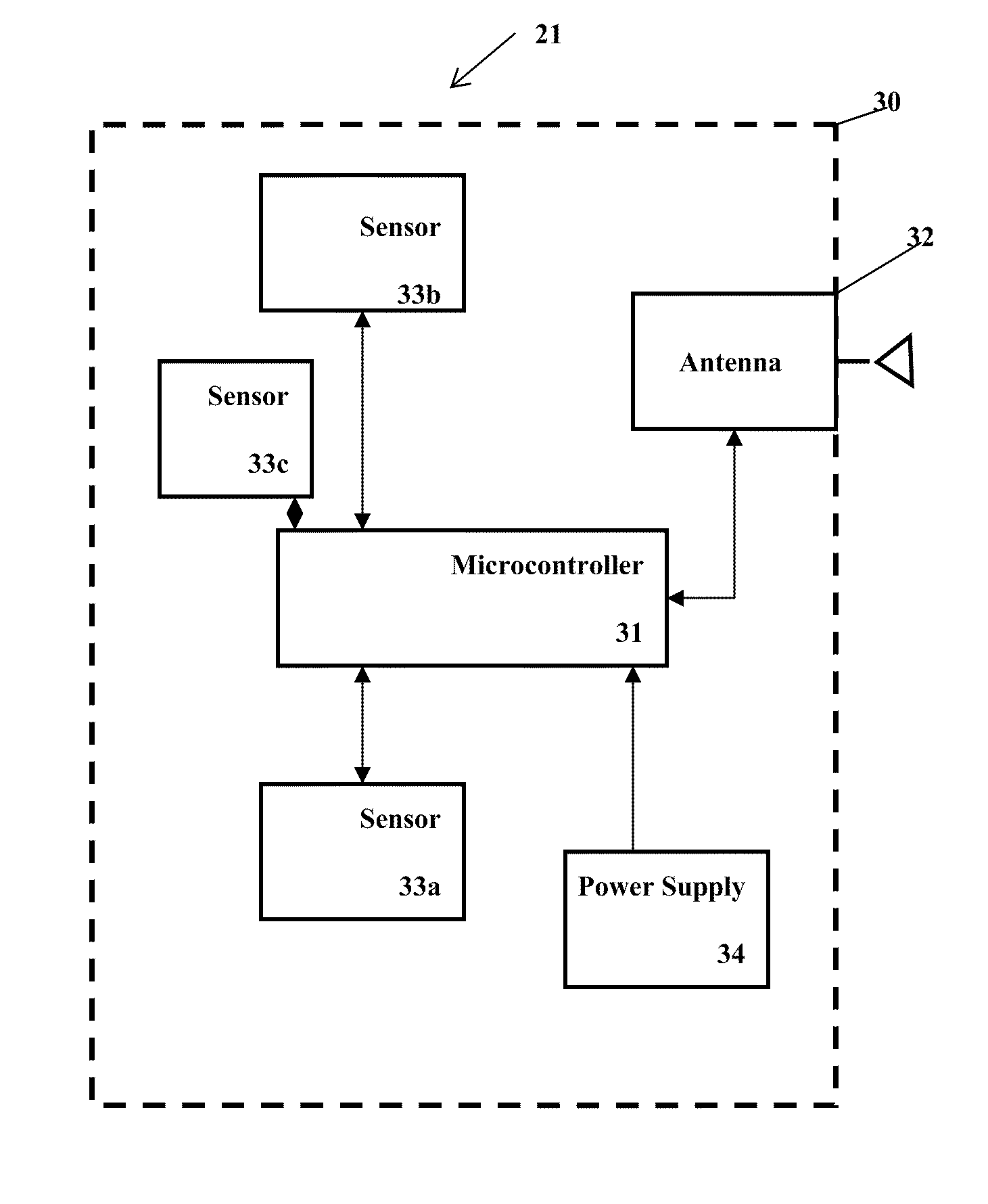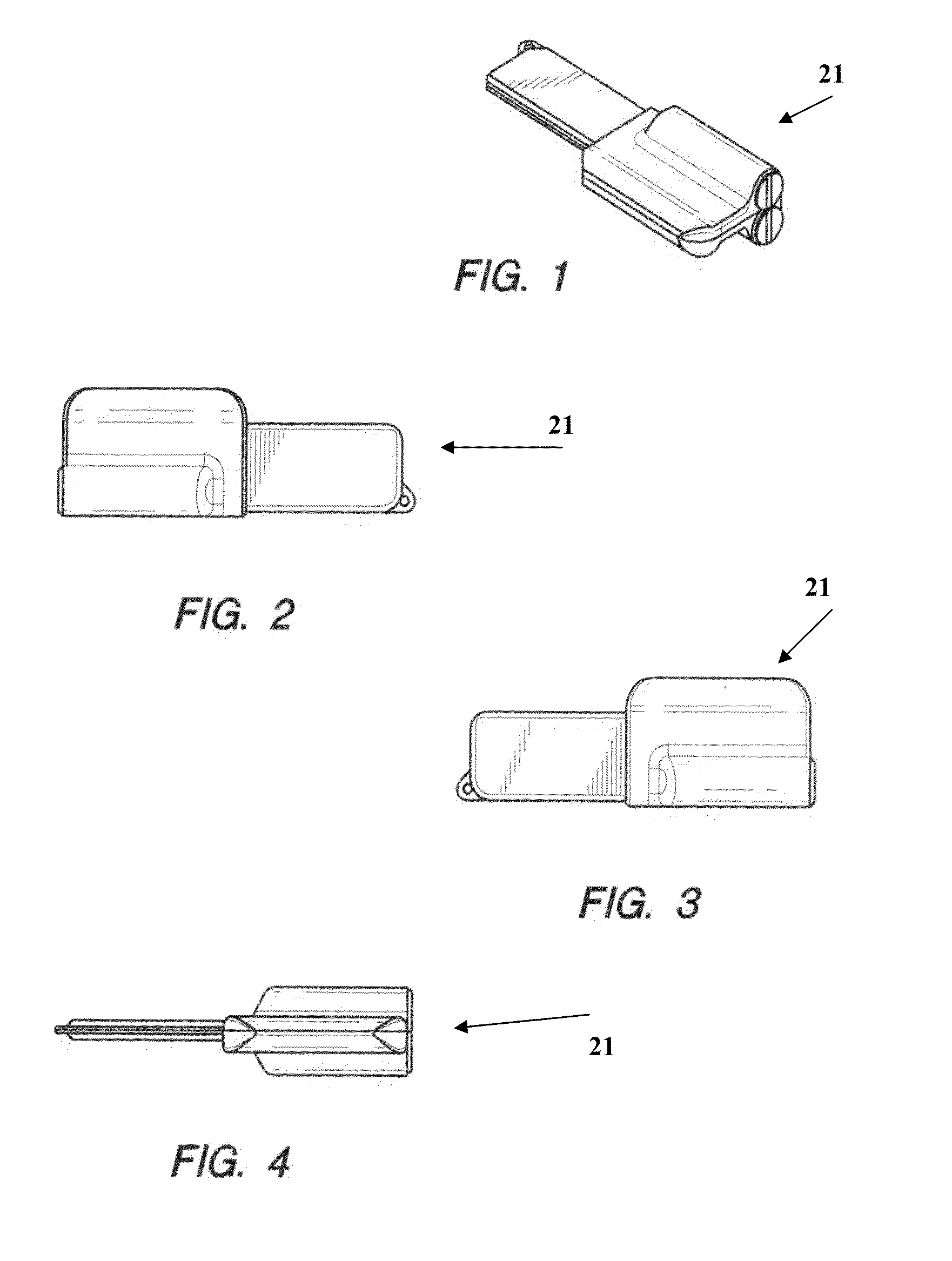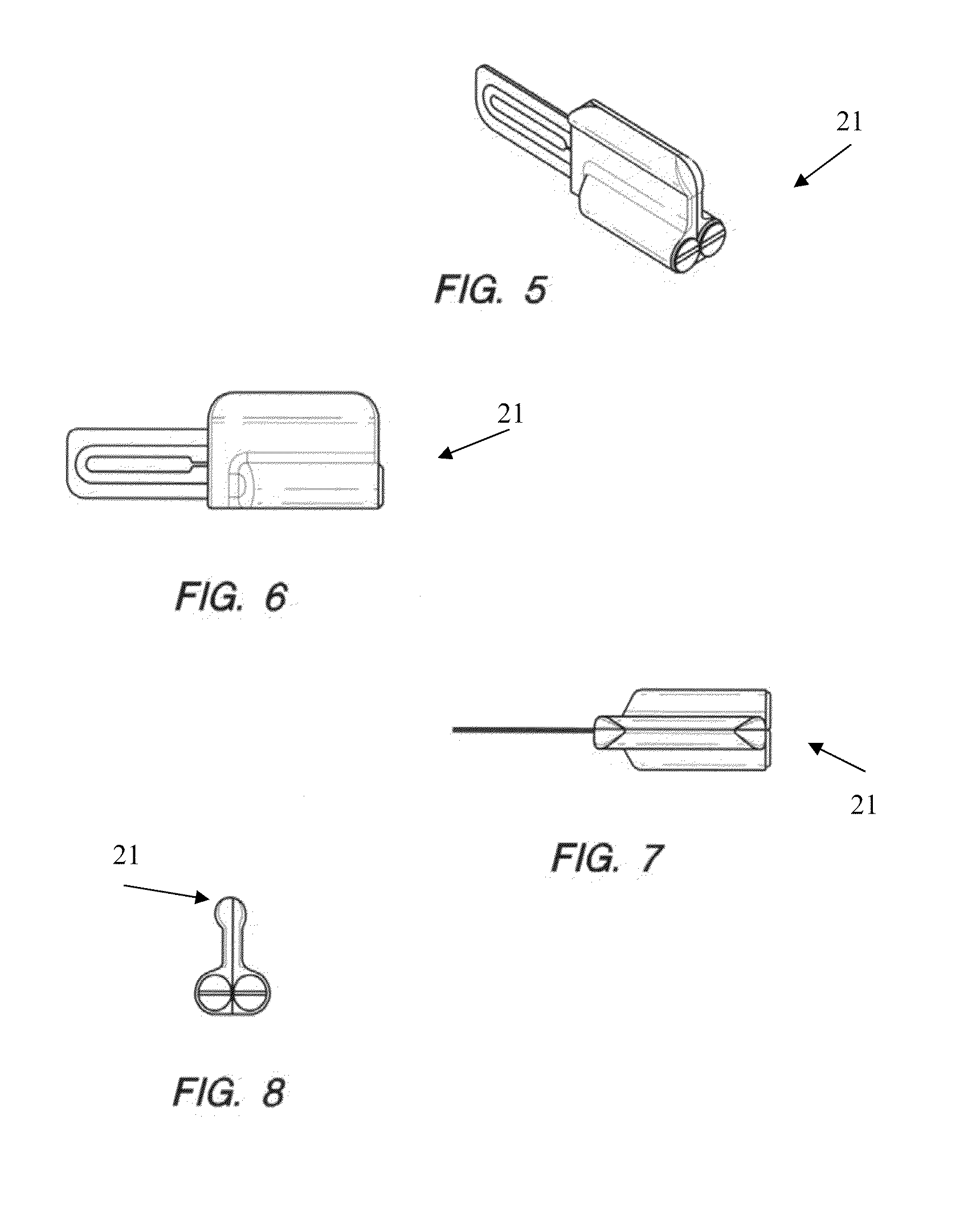Wireless soil sensor utilizing a RF frequency for performing soil measurements
- Summary
- Abstract
- Description
- Claims
- Application Information
AI Technical Summary
Benefits of technology
Problems solved by technology
Method used
Image
Examples
Embodiment Construction
[0064]The present invention is preferably used with a system and method such as disclosed in Glancy, et al., U.S. Patent Publication Number 2006 / 0178847 for an Apparatus And Method For Wireless Real Time Measurement And Control Of Soil And Turf Conditions, which is hereby incorporated by reference in its entirety.
[0065]The present invention may be used with a system, sensor and method such as disclosed in Campbell, U.S. Pat. No. 7,482,820 for a Sensor For Measuring Moisture And Salinity, which is hereby incorporated by reference in its entirety. The present invention may use a chemical sensor probe such as disclose in U.S. Pat. No. 4,059,499 which is hereby incorporated by reference in its entirety. The present invention may use a chemical sensor probe such as disclose in U.S. Pat. No. 5,033,397 which is hereby incorporated by reference in its entirety. Systems and methods for optimizing irrigation are disclosed in Magro et al., U.S. patent application Ser. No. 12 / 697,226, filed on ...
PUM
 Login to View More
Login to View More Abstract
Description
Claims
Application Information
 Login to View More
Login to View More - R&D
- Intellectual Property
- Life Sciences
- Materials
- Tech Scout
- Unparalleled Data Quality
- Higher Quality Content
- 60% Fewer Hallucinations
Browse by: Latest US Patents, China's latest patents, Technical Efficacy Thesaurus, Application Domain, Technology Topic, Popular Technical Reports.
© 2025 PatSnap. All rights reserved.Legal|Privacy policy|Modern Slavery Act Transparency Statement|Sitemap|About US| Contact US: help@patsnap.com



